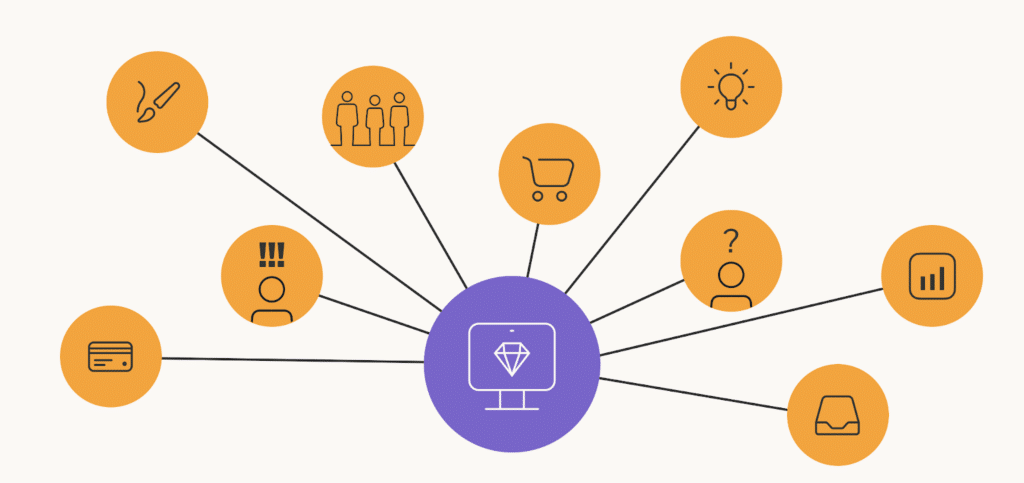Our first article in this series was a high-level overview of the CX by Design process. From here on out, we’re going to take a detailed look at each stage in the process. And we’ll start with Day 0 – the moment when a company decides it’s time to call in a CX consultant.
First, let’s get a bit of background on why companies often need a CX boost.

The many moving parts of modern business
Even at the simplest level, a modern business has many moving parts. Let’s use the example of a jewelry maker who sells their work on an online platform. While they’re a team of 1 selling a single type of product, they still have to manage the following areas:
Marketing, customer research, and experience:
- Identify their audience.
- Understand audience wants, preferences, budgets, and tastes.
- Advertise the jewelry.
Product development and manufacturing:
- Develop new designs.
- Order materials.
- Assemble the jewelry.
- Manage supply/production costs.
Operations and fulfillment:
- Process and ship customer orders.
- Manage shipping costs.
- Handle returns.
Administration and customer care:
- Answer customer questions.
- Handle taxes, budgeting, inventory, and accounting.
- Perform other admin and record-keeping tasks.
That’s a lot – and the complexity only increases as the company grows. So businesses create various teams and departments to handle each part of the process. This is a necessity, but it also creates its own problems of information siloing, office politics, competing goals, misaligned and inefficient processes, bottlenecks, and slowdowns. And because every business is limited by time, budget, and in-house capabilities, this results in a long list of issues that get put on the back burner in favor of more pressing concerns.

Questioning the customer journey
All of this is part of normal business. But it inevitably leads to two major problems:
- Process problems (i.e. slowdowns and bottlenecks) or poor customer engagement/satisfaction.
- Confusion about business priorities. In other words, there’s a discrepancy between what leaders think the business needs and what it actually needs.
At this point, company leaders know something isn’t working. They’re asking questions like:
- Do we really know who our customers are? Do we understand their wants, needs, and expectations?
- Are we making assumptions without data?
- How do customers experience our brand/product/service?
- Do we have a framework to improve the customer experience?
- Can our teams/processes/systems be optimized to support growth and eliminate inefficiencies?
These questions are difficult to answer – especially for people who are closely involved with the business. It’s hard to adopt a beginner mindset and think like a customer or even an outsider.
It’s at this point that companies usually approach CX consultants with their problem(s) that need to be resolved.

Calling in the CX consultants
Because business has so many moving parts, it needs to be viewed holistically. This is something that CX professionals are trained to do. CX is a multidisciplinary field that uses the principles of psychology, technology, and business to analyze and address problems. It’s a human-centric practice; establishing a great customer experience means understanding the humans on both sides of the equation. In other words, processes are improved for both employees and customers. The result is a better customer experience, which translates into improved efficiency and revenue for the company.
Specifically, CX consultants help their clients:
- Understand, qualify, and empower their customers.
- Establish a customer journey.
- Define, track, and iterate on success metrics.
- Align existing tech systems.
- Integrate teams, processes, and systems.
- Enable information sharing across teams and departments.
This means the CX consultants must deeply understand their client’s business, industry, environment, processes, and challenges. That’s why we kick off every CX by Design project with an in-depth look at the entire company ecosystem.
Up next: Days 1-10 – Defining the problem
In our next article, we’ll talk about how we learn about our client and help them define their problems. Spoiler alert: The real problem is often not what the client thinks it is! Join us next time to learn more.